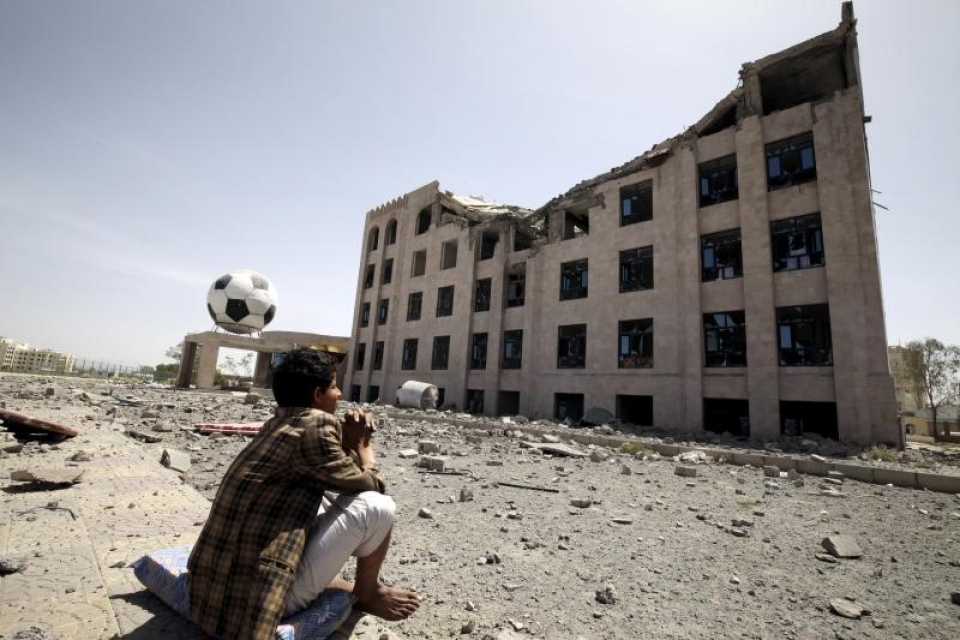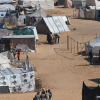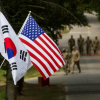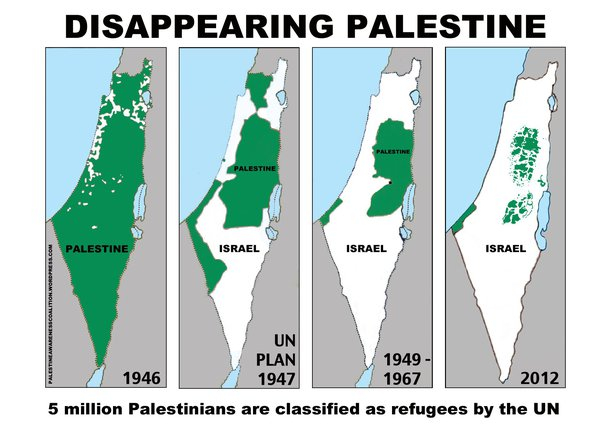by : Vali Nasr and Maria Fantappie , FOREIGN AFFAIRS
The shift in Washington is undeniable: the Middle East is no longer a top priority for the United States. The U.S. withdrawal from the broader region is evident in the departure of troops from Afghanistan and reductions in U.S. military commitments to Iraq, Jordan, Kuwait, and Saudi Arabia, alongside a heightened focus on China and Russia. There are good reasons for this shift in strategy, especially given the woeful recent history of U.S. involvement in the region, but it also brings risks of its own. The United States’ precipitous departure from Iraq in 2011, for example, paved the way for the rise of the Islamic State (also known as ISIS) and the expansion of Iran’s regional footprint. To avert similar damage this time, Washington must find a way to pair reductions in military commitments with gains in regional stability. One of the best opportunities for achieving those gains lies in emerging talks between the region’s two most consequential antagonists: Iran and Saudi Arabia.
Even as the United States pares back its commitments, conflict in the Middle East has entered a dangerous new phase. Iran and Israel are engaged in a shadow war of cyberattacks, targeted assassinations, and sabotage. Russia and Turkey are backing proxy paramilitary forces in Libya and Syria (as well as in the Caucasus). New missile and rocket technologies are finding their way into the hands of nonstate actors, including Hamas, Iraqi paramilitary groups, and the Houthis in Yemen. Turkey and Iran have made surprising leaps in drone warfare capabilities, drastically changing the military balance of power. Turkish drones successfully defended Idlib in Syria and eviscerated Khalifa Haftar’s Arab- and Russian-backed militia in Libya, while Iran has used sophisticated drones to bypass advanced air defense systems and hit critical targets in Saudi Arabia. As such technologies proliferate across the region, conflicts will become more unpredictable and dangerous. And the more likely it is that conflicts spiral out of control, the more likely it is that the United States will have to return to the region to deal with the consequences.
The most destabilizing and dangerous rivalry in the region—the one between Iran and Saudi Arabia—has played out from the Levant to the Persian Gulf, polarizing the region along Shiite-Sunni and Arab-Persian fault lines. The long-standing competition escalated first with the start of the Iraq war in 2003 and then with the onset of civil wars in Syria and Yemen and the 2015 Iran nuclear deal.

Tensions reached an especially dangerous point in 2019, when Iran launched a sophisticated military attack on Saudi oil installations. Today, the two rivals continue to lock horns in Yemen and to jockey for position in Iraq and Lebanon, and could be bracing for renewed competition in Afghanistan as the United States withdraws and the Taliban take territory.
Yet despite all of this, in April senior Saudi and Iranian military and intelligence officials met in Baghdad following a particularly intense period of drone and missile attacks launched from Yemen and Iraq. Iraqi Prime Minister Mustafa al-Kadhimi leveraged his relations with both Saudi Crown Prince Mohammed bin Salman and Tehran to bring the two sides together. Before long, bin Salman was striking a rare conciliatory tone, saying he wanted “good relations” with Iran and expressing his openness to dialogue with the Iranian-backed Houthis in Yemen. Iran’s government spokesman has shown similar optimism about a breakthrough, and the Iranian press are predicting an imminent resumption of diplomatic ties. Since April, there have been additional meetings under the oversight of high-level security officials from both sides, including the commander of Iran’s Quds Force; after a pause around Iran’s presidential election, the talks should pick up again when Ebrahim Raisi takes office this month.
The Persian Gulf rivals have some distance to go to mend fences, but their nascent rapprochement offers the best chance in years for a return to regional stability in the Middle East. The United States stands to benefit immensely from ongoing diplomacy that moves the two sides in the right direction. And although Washington is not at the table, it can offer critical support to the process by providing Saudi Arabia with the right mix of encouragement and reassurance—with the ultimate aim of ensuring that a reduced U.S. presence in the Middle East does not bring catastrophe.
QUESTIONS OF COMMITMENT
There is cause to question whether Saudi Arabia is genuinely committed to talks with Iran. Riyadh could be using the dialogue to placate Washington by presenting itself as a constructive regional player or to buy time to shore up its position and come up with ways to counter Iranian drones. Yet Riyadh does have good reason to bury the hatchet with Tehran. Most immediate, Saudi leaders want to end their costly war in Yemen, and that requires Tehran pressuring the Houthis to halt their offensive and engage in serious negotiations. Over the longer term, Saudi Arabia can no longer count on unwavering U.S. support, and its relations with the United Arab Emirates have frayed over oil production disputes. And as competition between Iran, Israel, and Turkey intensifies, de-escalation with Iran could allow Saudi Arabia to expand its influence by playing a balancing role in contested arenas of Iraq, Lebanon, and Syria.
Riyadh is playing a weak hand and knows it. The country is stuck in a quagmire in Yemen and is vulnerable to Iran’s drone warfare. It backed away from Lebanon, lost in the Syrian civil war, and has been on its heels in Iraq since 2003. Iranian influence, by contrast, is firmly entrenched in the Levant. And thanks to Riyadh’s ill-fated 2017 gambit to isolate Qatar, Tehran has also expanded its influence onto the southern shores of the Persian Gulf. A nuclear agreement with the United States would, Saudi officials fear, only bolster Iran’s confidence, ending Tehran’s international isolation and allowing its economy and regional trade to expand.
But successful talks are in Iran’s interest, too. Tehran’s bluster masks worries over the cost of its unchecked regional rivalry with Riyadh, and the Iranian government’s desire for a reduced U.S. presence could be thwarted by ongoing regional tensions. Iran would also like Saudi Arabia to end its support for ethnic separatist forces in Iran and exile media outlets that encourage regime change. After the announcement of the 2015 nuclear deal, Iran underestimated its adversaries’ ability to undermine the agreement. This time around, it sees regional engagement as essential to striking, and sustaining, a deal with Washington. And as Iran considers competition with Israel and Turkey, it wants to keep Saudi Arabia from fully backing such rivals.
Talks have thus far focused on narrow security issues, primarily in Yemen—where the most urgent and contentious questions relate to the oil-rich province of Marib. (As one Saudi official put it to us, “It’s all about Marib.”) Iran wants Riyadh to end its economic blockade of Houthi-held areas and to halt airstrikes on Houthi positions, including around Marib. Such an agreement would guarantee, the idea goes, a Houthi victory in Marib that would allow Tehran to dictate the final settlement in Yemen while continuing to threaten Saudi Arabia with drone and missile attacks. Saudi Arabia, for its part, is trying to buy time while it bolsters its air defense systems and pushes for an end to drone attacks launched from Iraq by Iranian-backed militias (three of which recently managed to strike a royal palace in Riyadh).
Ultimately, Iran and Saudi Arabia want different things out of talks. Tehran hopes they’ll lead to a normalization of Iranian-Saudi ties, while Riyadh wants its security concerns addressed—specifically, a resolution in Yemen and an end to cross-border attacks. Saudi negotiators, accordingly, are holding out on normalization until they get real concessions, while Iranian negotiators are resisting limited agreements on Iraq and Yemen because such deals would address Saudi concerns without changing the overall relationship. The dynamics are made more complicated by the fact that although Iran knows what it wants, Saudi officials are hindered by uncertainty about where U.S. policy is heading—on the specifics of an Iran deal, the U.S. troop presence in Iraq, and broader U.S. policy in the region. Such uncertainty undermines the confidence that Saudi officials need to engage in serious dealmaking.
THE RIGHT ASSURANCES
Washington can help bolster Saudi confidence, and thus encourage real progress in the talks, by providing Riyadh with a clear guarantee that it will defend the kingdom in the face of a direct Iranian attack. The United States can also help by stressing to Iran that in contrast to the unconditional U.S. withdrawal from Afghanistan, troop reductions will depend on a sustainable security agreement between Iran and its Arab neighbors, as well as on an end to attacks on Saudi assets and territory. Also helpful would be an explicit U.S. commitment to try to prevent the fall of Marib to the Houthis—an outcome that would only prolong the war in Yemen and cause all sides to escalate in dangerous ways—and to put international pressure on Iran if Houthis continue their march on Marib.
Above all, the United States can help by persuading both Iran and Saudi Arabia that their own security interests are best served by successful talks. Each side should see progress as critical to what its leaders want: U.S. security guarantees in Riyadh’s case and a smaller U.S. military footprint in the region in Tehran’s. The two goals are not incompatible: the United States has a vast military presence that comes without specific security commitments to Saudi Arabia—an arrangement whose shortcomings became abundantly clear when Iran attacked Saudi oil facilities without a U.S. response. Instead, Washington should aim for a smaller military presence, but with specific commitments to Saudi security. Such efforts could spur exactly the kinds of steps that will, over time, generate momentum, build trust, and create new facts on the ground—the building blocks, in turn, of a regional security architecture that could survive a U.S. withdrawal from the Middle East.

















